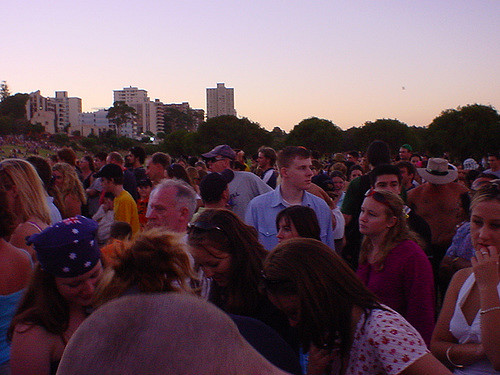By Alison Taylor, Demographer, City Futures Research Centre.
This week new projections for Local Government Areas in NSW were released by the Department of Planning and Environment. This release should again prompt us to urgently, but carefully, consider the type of future we want for ourselves and our children.
Unfortunately, coverage of the release by mainstream media outlets chose to dwell on the headline numbers and the pressures that will result. “Sydney population booms and the only way is up and in” suggested we must build more towers – as well as terraces and other small developments. “Population surge puts pressure on NSW” highlighted worsening traffic jams and poor housing affordability. Others commented on the differences to the previous projections released in 2014.
It’s normal that the projections change from release to release. Despite not yet having new Census data to rebase these projections on, the 2016 update reflects changed circumstances since 2013 when the last set were prepared. Let’s take how many people are moving from state to state, often seeking jobs or lifestyle opportunities, to consider why we need an update.
Back in 2013, Australia was still recovering from the impacts of the GFC and the resources boom was sucking people into Western Australia in particular. When times are tough fewer people move, reflected in lower levels of interstate movement in 2010 and 2011.
However, 2015 has again seen a slump in interstate movement with the total moving 10,500 below the average of the previous decade – including the GFC impacted years.
In NSW in 2015, the number of arrivals from interstate was above the previous decade’s average. This was also the case in Victoria (while all other states and territories recorded arrivals below the previous ten year average). In contrast, the number of interstate departures from NSW was down compared with longer term trends (as was the case in Victoria, South Australia and Tasmania).
So, compared with the past decade more people on average are moving to NSW, while fewer are leaving for other states or territories. Despite this the State continues to record a net loss – roughly 86,000 arrivals balanced by 93,000 departures, leading to a net loss of 6,600 people in 2015.
This is less than half the interstate loss that was occurring when the 2014 projections were prepared. Obviously this will impact on the number of people in NSW now and in the future. It is important that current projections reflect these changes.
But, the right questions are not being asked about these trends. Who are the people that are not moving interstate? How old are the people moving to NSW, where do they move to and what do they do after they arrive? If housing is so expensive in Sydney, why are people continuing to move here and what type of housing do they choose when they arrive? There are many stories contained in these projections that have not yet been told.
Projections must reflect trends in both interstate and overseas migration, as well as births and deaths. These patterns must be carefully analysed and modelled for all areas and for all age groups. This is not an easy task and one that requires certain judgements to be made – particularly regarding how current trends will track in the future. Public sector demographers must tread a tightrope, carefully balancing professional integrity with ownership of the output by political and bureaucratic masters.
After all, the updated projections need to be publicly released so they can be used to plan the infrastructure and services required by a growing population.
If nothing changes, it is highly likely that our populations will reach something like what has been modelled by the NSW Department of Planning and Environment. Metropolitan Sydney for example, will probably add close to 1.5m extra people to reach nearly 6.5 million people in the next 20 years. At the very least we must ensure that those responsible for providing the infrastructure and services, the housing and the open spaces that this population needs, stay focused on their task and deliver.
But where is the discussion about whether we want this outcome? There are many calls for improvements to the way our cities, towns and rural areas currently function, from easing congestion and reducing commuting, to poor housing affordability, environmental degradation and worsening inequality – the list goes on.
Why aren’t we thinking about how to change the future outlined for us in the 2016 Projections? What do we want the cities of the future to look like? What would an alternative future look like and what are the steps we need to take to create that future?
These questions should be addressed as part of a national discussion about population – instead of letting our immigration policies act as a de facto population policy. Let’s hear the stories of our population, uncover the changing trends and consider how we can build a better future.
The release of the latest projections should drive us to assertively shape our future into one that we want – not sit back and passively accept whatever we get.
The best way to predict the future is to create it.
Peter Drucker
Questions about our future cities and the people that live in them will be debated at the 2016 Australian Population Association conference being held 29 November to 2 December in Sydney. See www.apaconference.com.au for further details.



No Comments so far ↓
There are no comments yet...Kick things off by filling out the form below.